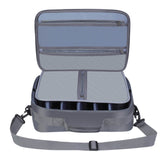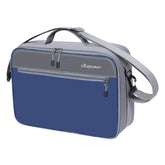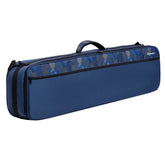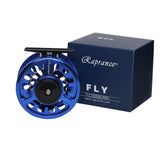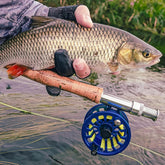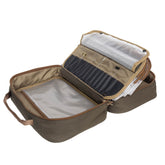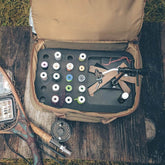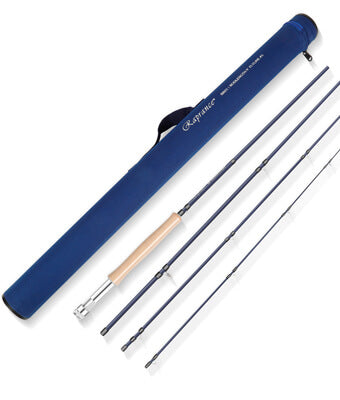Fly Reel: Choosing the Right Large Arbor Reel with an Effective Drag System
Choosing the right fly reel is essential for a successful day on the water. With various options available, understanding the differences in reel sizes, drag systems, and arbor types can greatly enhance your fly fishing experience. A large arbor fly fishing reel offers advantages such as faster line retrieval and reduced line memory, making it a popular choice among anglers.

I often find myself considering the intricacies of a fly reel while preparing for a trip. The drag system is crucial for controlling fish during a fight, and knowing how to select the right size reel helps ensure that I have the appropriate setup for my fly line and backing. Understanding the specifications of fly fishing reels empowers me to make informed decisions about my fishing equipment and improves my angling success.
By exploring the features of different fly reels, I’ve learned how to tailor my gear to suit various conditions and target species. Whether you’re a novice or a seasoned angler, knowing how to choose a fly fishing reel that meets your needs will enhance your time on the water.
Anatomy of a Fly Reel
A fly reel consists of several key components that work together to ensure effective line management and control while fishing. Understanding these components is essential for selecting the right gear for specific fishing conditions.
Exploring the Spool
The spool is the core of the fly reel where the line is stored. It holds the fly line, backing, and can vary in size depending on what species I target, such as steelhead or bass. Large arbor spools offer quicker line retrieval, reducing the time it takes to reel in fish.
Spool capacity is important; I must consider the backing capacity and line capacity to avoid running out of line when a fish makes a long run, especially with powerful species like tarpon or bonefish. Regular maintenance of the spool ensures smooth operation and extends the reel's life.
Understanding Drag Systems
The drag system is crucial for managing the pressure exerted on the fish during a fight. This component prevents the line from breaking by allowing controlled line release when a fish pulls. I can adjust the drag pressure using a drag knob, which varies based on the species targeted.
Many drag systems utilize carbon fiber for its durability and smoothness. A quality drag system offers both effective resistance and smooth operation, allowing me to handle larger fish effectively. Regular inspections of the drag components help maintain optimal performance.
Other Key Components
Several additional parts contribute to a fly reel's functionality. The handle allows me to retrieve line, and its ergonomics significantly affect the efficiency of reeling in fish. Quality materials enhance durability and make maintenance straightforward.
I pay attention to components like the frame and foot, which support the spool and attach to the rod. Each part must be robust enough to withstand various environmental factors during fishing excursions. Proper care and maintenance can significantly prolong the lifespan of these components.
Selecting the Right Fly Reel
Choosing the correct fly reel is essential for optimizing your fishing experience. The right reel enhances line retrieval, supports your rod type, and caters to specific fishing environments. Important factors include drag systems, reel sizes, and the benefits of large arbor designs.
Factors in Choosing a Fly Fishing Reel
When I select a fly fishing reel, I consider several key aspects. First, the drag system is critical. A smooth, adjustable drag allows me to control the tension on the line, which is essential when battling fish. I prefer reels with disc drag systems made from materials like nylon or Dacron for durability and responsiveness.
Next, I assess the reel size. The reel must match my fly rod's specifications to ensure balance and performance. For instance, pairing a smaller reel with a long rod may lead to awkward handling. Compatibility enhances the overall fishing experience, preventing wasted efforts.
Fly Reel Sizes and Their Uses
Understanding fly reel sizes is important for targeting specific species and environments. Generally, reels are categorized by weight number, such as 3/4, 5/6, or 7/8, which indicates their line capacity and suitability for different conditions.
For trout fishing in small streams, I often use a 3/4 weight reel, which is lightweight and manageable. Meanwhile, for larger fish or fast-moving water, a 7/8 weight reel provides the necessary strength and line retrieval speed. Matching the reel size to my intended fishing environment optimizes performance and helps me catch the desired species effectively.
The Significance of Large Arbor Reels
Large arbor reels offer advantages that enhance my fishing experience. The larger spool diameter increases line retrieval speed, which is beneficial when I need to recover line quickly while reeling in a fish. This feature is especially helpful in rivers or streams where fast-paced action is common.
In addition to speed, large arbor reels reduce line memory, which improves casting accuracy and visibility. The design also allows for quick, easy adjustments to drag settings due to their ergonomic layout. A large arbor reel often promotes smoother performance, making it an effective choice for various fishing scenarios.
Fly Line, Backing, and Taper Considerations
In fly fishing, understanding the components of your setup is crucial. The right fly line, backing, and taper influence casting distance and presentation effectiveness. Each element plays a distinct role in achieving successful catches.
Matching Lines and Leaders
When selecting a fly line, I focus on its compatibility with the leader. The leader's diameter and strength should match the line's test weight. For example, when using a floating line, a tapered leader of 9 to 12 feet is ideal for dry flies or nymphing. For sinking lines, a shorter, thicker leader may be more suitable, especially for streamers.
I also consider the specifics of the fishing technique. While dry flies necessitate a delicate presentation, nymphing often requires a more robust connection. This balance between line and leader can significantly affect the success of my casts.
Choosing Backing and Capacity
Backing acts as a reservoir on the spool, providing additional line capacity. I use Dacron backing for its strength and low stretch properties. An appropriate backing capacity is crucial—especially when targeting species that make long runs.
For instance, a typical setup might utilize 100 yards of backing for lighter reels, while heavier setups may need 200 yards or more. This capacity not only accommodates the fly line but also prevents any mishaps during intense battles when a fish makes a surge.
Understanding Line Tapers and Applications
The taper of a line determines how it transfers energy during casting. I differentiate between double taper, weight forward, and level lines, each serving different purposes.
For example, a weight forward taper excels in longer casts and is great for targeting distant fish. In contrast, a double taper is ideal for delicate presentations with dry flies due to its gradual tapering.
This understanding of taper applications guides my choices in various fishing scenarios, from nymphing with a level line to employing a weight forward line for casting distance with streamers. Knowing how each taper affects performance ensures that I am equipped to handle diverse fishing conditions effectively.

